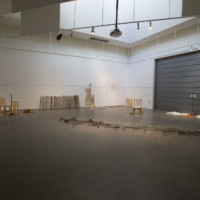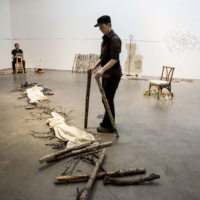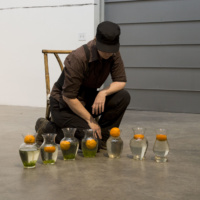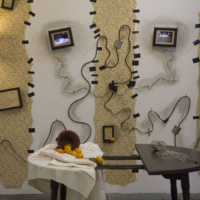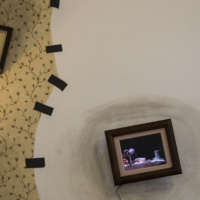Systems of Pain/Networks of Resilience
Systems of Pain/Networks of Resilience: (Santa Fe) and (Portrait) (2017) in Feral Feminisms

Excerpts of (Santa Fe) and (Portrait) from Systems of Pain/Networks of Resilience were published in Feral Feminisms: The General Issue.

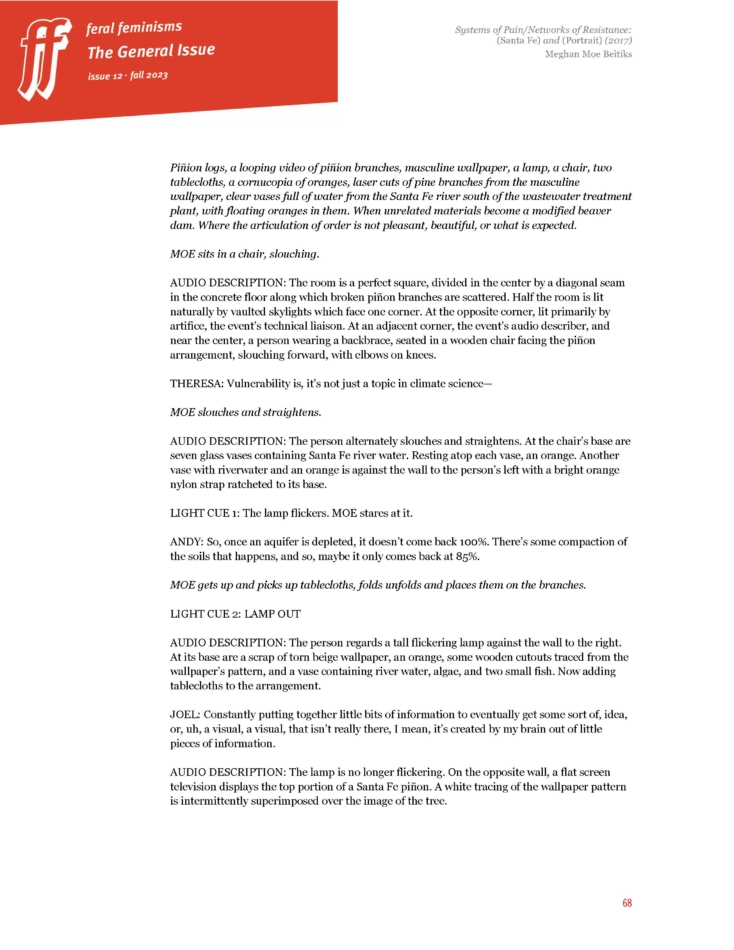






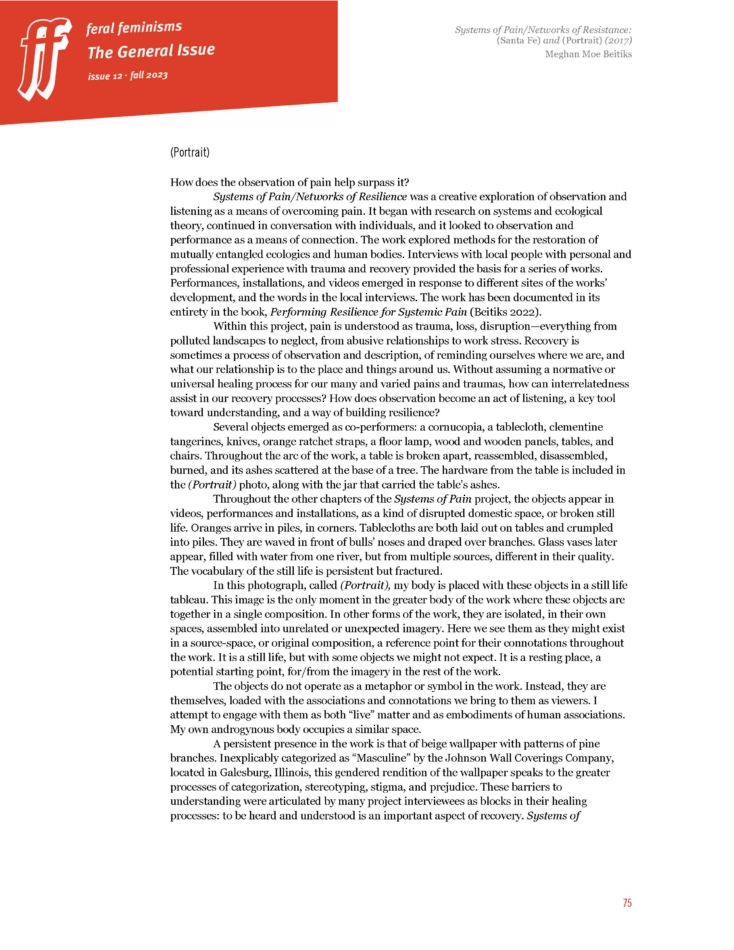


Performing Resilience for Systemic Pain (2022)
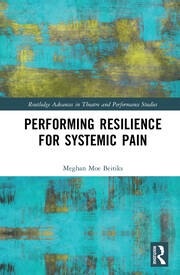
How might performance serve as a means for facing ubiquitous trauma and pain, in humans and ecologies?
While reflecting on my multidisciplinary work Systems of Pain/Networks of Resilience, I consider bodies of knowledge in Trauma Theory, Intersectional Feminist Philosophy, Ecology, Disability Studies, New Materialism, Object-Oriented Ontology, Gender Studies, Artistic Research, Psychology, Performance Studies, Social Justice, Performance Philosophy, Performance Art, and a series of first-person interviews in an attempt to answer that question. I write through the process of making the work and the real-life, embodied encounters with the theories explored within it as an expansion of the work itself. Facing down difficult issues like trauma, discrimination, and the vulnerability of the body, I looks to commonalities across species and disciplines as means of developing resilience and cultivating communities. Rather than paint a picture of glorious potential utopias, I takes a hard look at myself as an embodiment of the values explored in the work, and stays with the difficult, sucky, troubling, work to be done.
Performing Resilience for Systemic Pain is a vulnerable book about the quiet presence and hard looking needed to shift systems away from their oppressive, destructive realities.
Available now from Routledge. To request a review copy, fill out this form. Contact me for inquiries.
Systems of Pain/Networks of Resilience (Nebraska) (interconnections) (2021)
Systems of Pain/Networks of Resilience (Nebraska) has been published in the first issue of interconnections: journal of posthumanism. After the peer-review process I was made the journal’s first Creative Works Editor.

Systems of Pain/Networks of Resilience (Moment 2) (World Futures) (2020)
Systems of Pain/Networks of Resilience (Moment 2) has been published in the peer-reviewed World Futures, in an issue on Queer Conviviality, edited by Sacha Kagan.
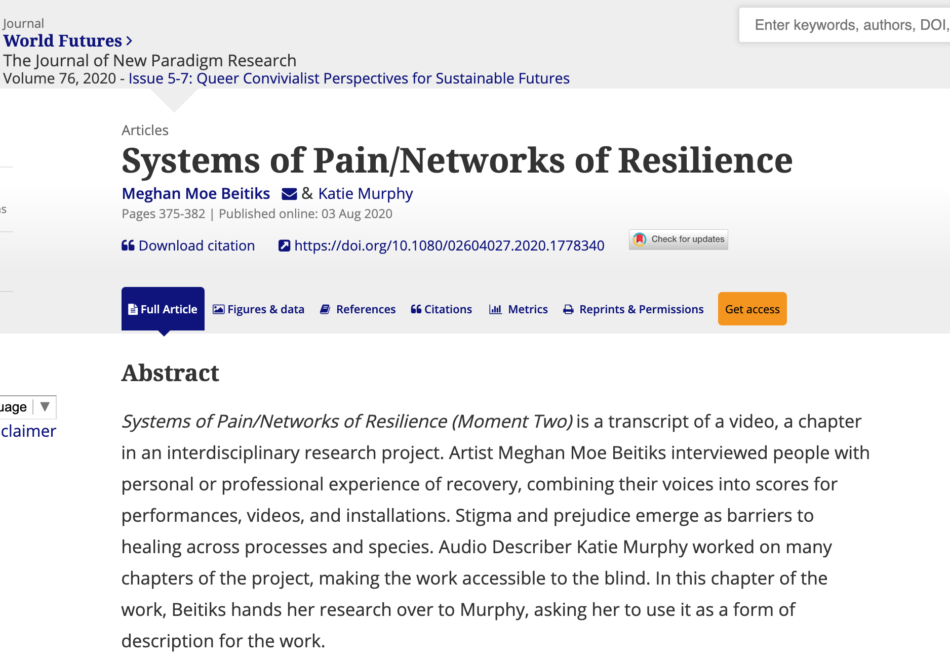
Systems of Pain/Networks of Resilience (Exhibition) (2018)

Systems of Pain/Networks of Resilience (Exhibition) is a display of all of the chapters of the Systems of Pain/Networks of Resilience project in one gallery. Curated by Cecilia Vargas, on view at the Arrowhead Gallery in the Dickson Center at Waubonsee Community College, June 7-July 10th, 2018.
Photos courtesy of Waubonsee Community College.

Systems of Pain/Networks of Resilience (Moment 2) (2017)
A video following the material journey of a table through various sites from the Systems of Pain/Networks of Resilience project. Audio Describer Katie Murphy creates a soundtrack based on my research and interviews with project participants. Original table designed by Jason Friedes. An extended examination of observation and connection.
Systems of Pain/Networks of Resilience (Santa Fe) (2017)


A live performance, a chapter in Systems of Pain/Networks of Resilience. Interviews with Santa Fe locals about the diverted and hotly contested Santa Fe River. A performance with pinion logs, tablecloths, oranges, “Masculine” wallpaper, charcoal, and water from two points along the river. Plus two volunteer fishes. Audio description by Adam Harvey. Technical support by Alberto Romero. Thanks to the Santa Fe Art Institute. Photos by Jane Phillips.
Systems of Pain/Networks of Resilience (New York 2) (2017)
An interactive video chapter of the Systems of Pain/Networks of Resilience project, developed at the Wassaic Project and realized in full in the projects’ exhibition at the Dickson Center. Panels of “Masculine” wallpaper obscure the viewer’s experience of a video. Though they can hear an Audio Description of the work, as well as the voices of people from upstate New York, they can only view the video in its entirely by standing at a safe distance: not too close, not too far.





Systems of Pain/Networks of Resilience (Installation One) (2016)
As part of the Studios Midwest Residency in Galesburg, Illinois, I created Systems of Pain/Networks of Resilience (Installation One) at Knox College’s Gallery The Box.
The piece featured documentation from SOP/NOR (Nebraska) on display in digital frames, as well as quotes from interviews for the piece in picture frames. The ashes of the broken/reassembled table from (Nebraska) were present, in a spilled jar, and the hardware from that table was used to secure the various cables in the installation. Various other props and artifacts from the (Nebraska) performance were also included.
The Box shares its space with Johnson Wallcovering Company, which features a “Masculine Wallpaper” section. Among the log cabin and sailboat patterns was a “Pine Trail” Wallpaper of no particular visual stereotype or gendered connotation. I include this wallpaper in the installation as a way of questioning the gender assignment of this particular depiction of nature.
Systems of Pain/Networks of Resilience is an exploration of observation as a tool for recovery from imbalance and trauma in human and non-human processes. I interview people with personal and professional experience with processes of recovery, then draw upon those interviews to create performance scores, videos and installations.
Systems of Pain/Networks of Resilience (Compilation: Words and Fields) (2016)
Presented at RIXC Open Fields Conference in Riga, Latvia, 2016.
Systems of Pain/Networks of Resilience (New York) (2016)
Part of Systems of Pain/Networks of Resilience (sop-nor.tumblr.com/). Created at Residency 108.
Systems of Pain/Networks of Resilience (Nebraska) (2016)
Systems of Pain/Networks of Resilience is an exploration of observation as a tool for recovery from imbalance and trauma in human and non-human processes. In (Nebraska), I interview a naturalist, a political scientist, a physical trainer, a representative of the Nebraska Humane Society, a woodworker, a Hospital Chaplin, and a number of individuals and artists who are in recovery from physical or emotional trauma. The interviews create a performance score for a live performance and video, compelling a number of interactions with everyday objects, and a specially designed table by Jason Friedes. Photos by Colin Conces/Bemis Center for Contemporary Arts.




